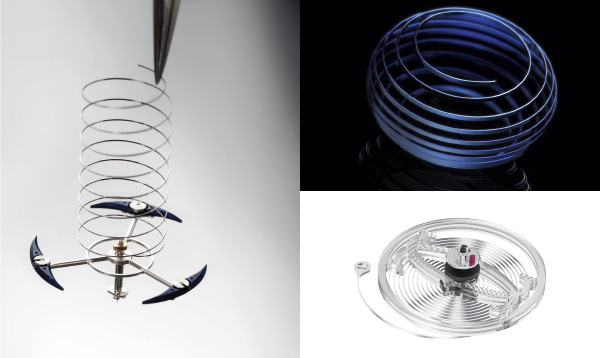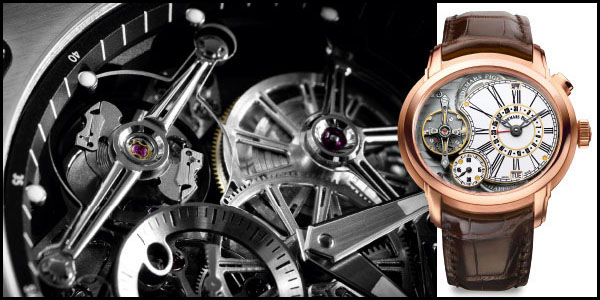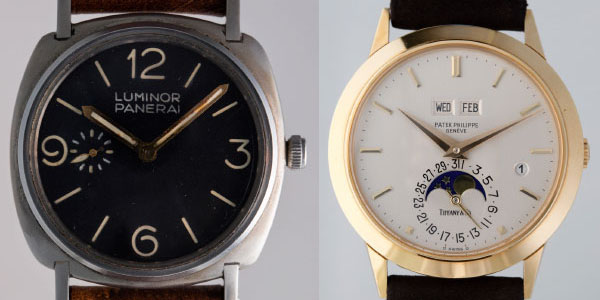
The end
Hairspring innovations haven’t arrived by accident. For a long time almost every hairspring was made by the Swatch Group’s Nivarox company, which has decided to cut deliveries. Its customers, the vast majority of watch brands, have been forced to reconsider their relationship with this tiny watch component. New manufacturers have thus sprung up. There are now around a dozen, producing for component suppliers and brands. Most use ferronickel alloys, the difference between them being in the way they are made. The shape of the spiral and particular of its outer coil determines its behavior. The terminal curve changes the way the spring develops (expand and contracts) while ensuring the stability of its center of gravity and the constancy of its frequency. The other solution is a three-dimensional spiral. The helical spring, like that fitted in Bovet’s Braveheart model, has a cylindrical shape. A variant of this is the spherical spring used by Jaeger-LeCoultre. Both are heavier and more complex than the flat spring. But they are seen as prestigious, which counts for a great deal, and more importantly they develop concentrically around their centers of gravity, rather than swaying from side to side. This reduces friction and enables the spring to devote its energies to making perfect oscillations. Such is the objective targeted by H. Moser & Cie and Laurent Ferrier with their double springs. They are pinned up head to tail to the same balance. If one drifts to the left, the other does the same, but to the right. They thus balance each other to improve the rate.

Metal
The metal spring, however, does have its limitations. Even a recently designed spring, like Rolex’s Parachrom, remains subject to magnetism, ageing and heat. Research into materials has occupied generations of watchmakers, scientists and metallurgists. They have tried just about everything, even glass, which Cartier gave a second chance in the regulating organ of its ID2 concept watch. It’s called Zerodur, a vitreous ceramic made for telescope mirrors. The solution that represents the essential advance is the silicon spring. It is unaffected by such baleful influences as temperature, friction, magnetism and air pressure. Patek Philippe takes advantage of these properties, as do Omega, Breguet and Sigatec, purveyors to Ulysse Nardin and more recently, Tudor.
Shapes
Silicon has a little-known asset. It can be cut exactly into any shape. Pinning up to the collet and the stud, shaping the curves, trueing in the flat, all these invisible operations that constitute quality are made much easier by working from a sheet of silicon. Rolex made no mistake when it launched its own silicon spring, called Syloxi. Thus several brands have applied the fruits of their research with differences that can be seen with the naked eye. It’s a flourishing and stimulating field that above all has made great progress in the reliability and accuracy of watches. Can we ask for a better innovation than that ?
Catch up with the first installment of this series (dealing with the dial ) via the 12th Art section of gmt.mag.com






